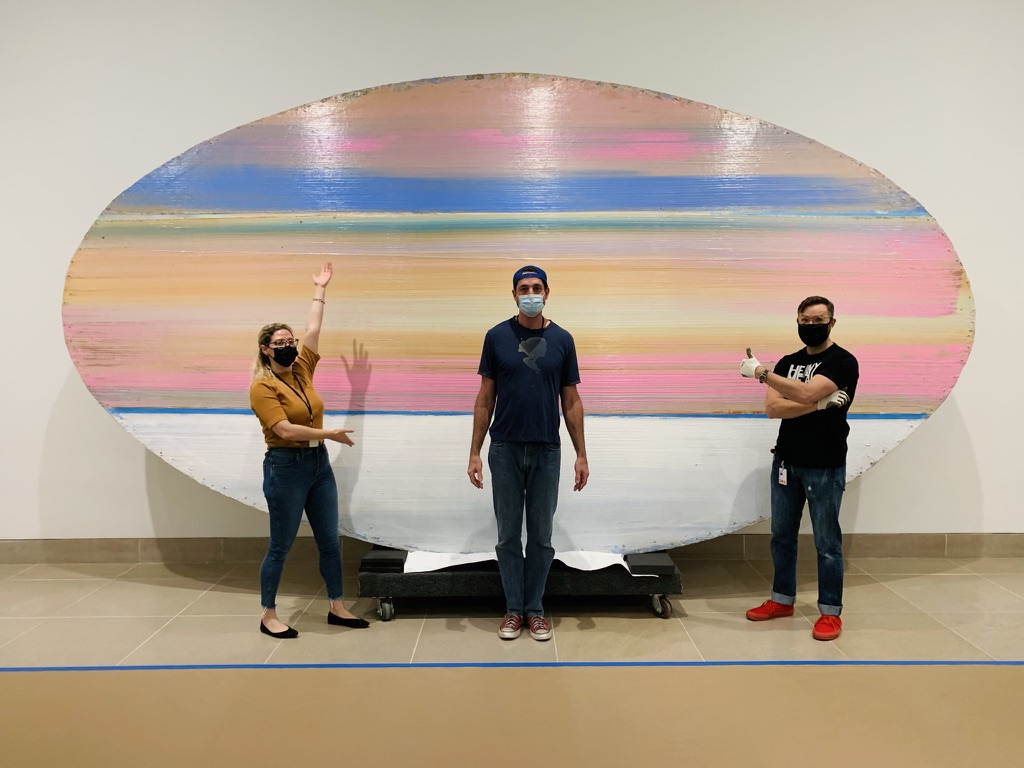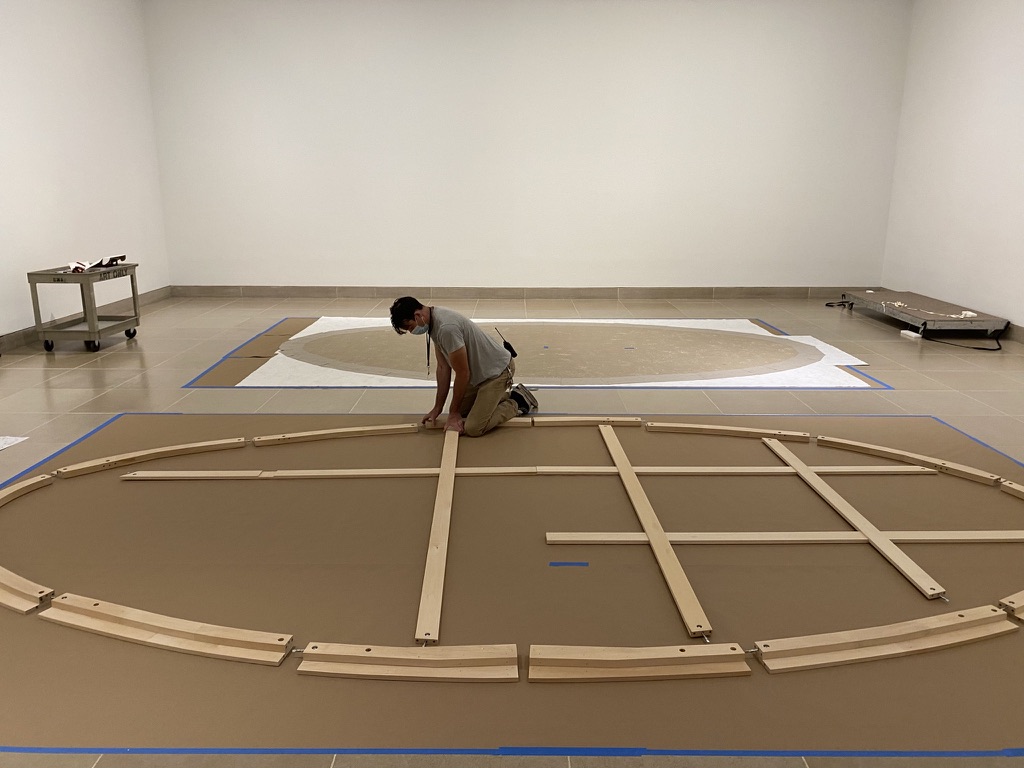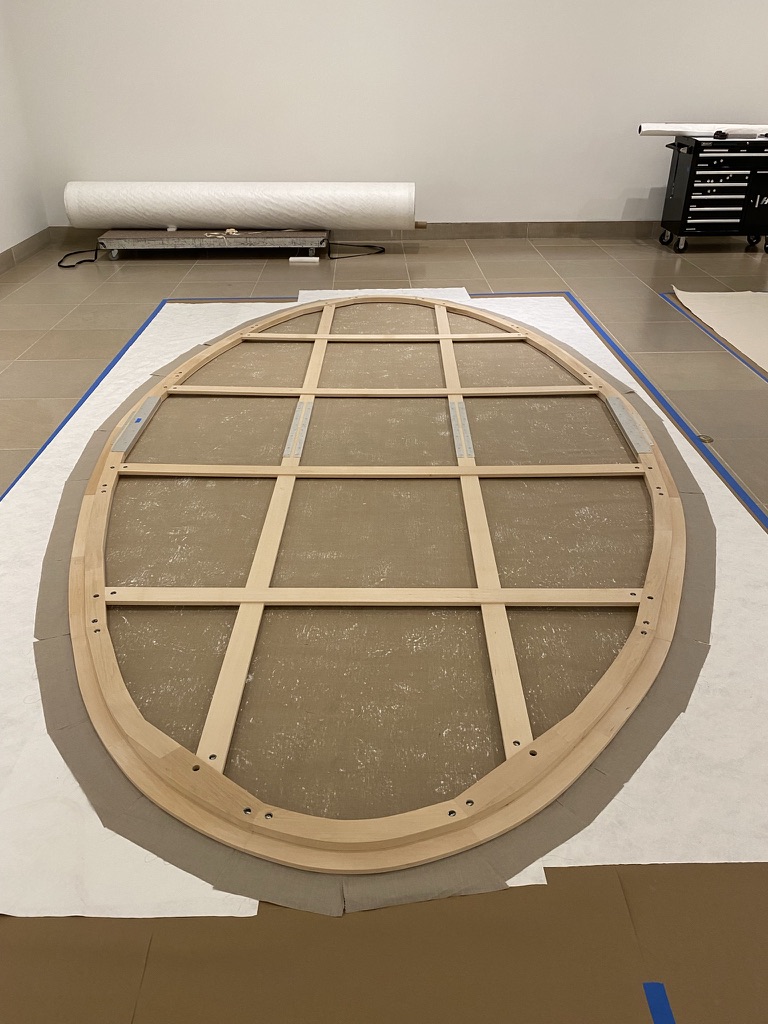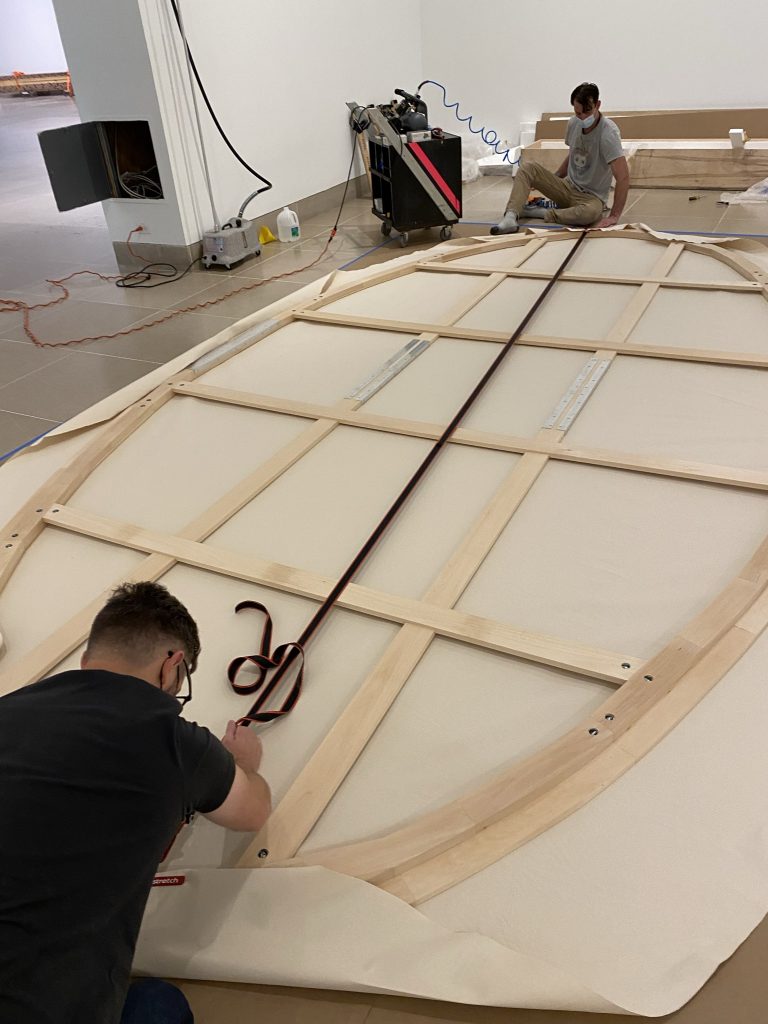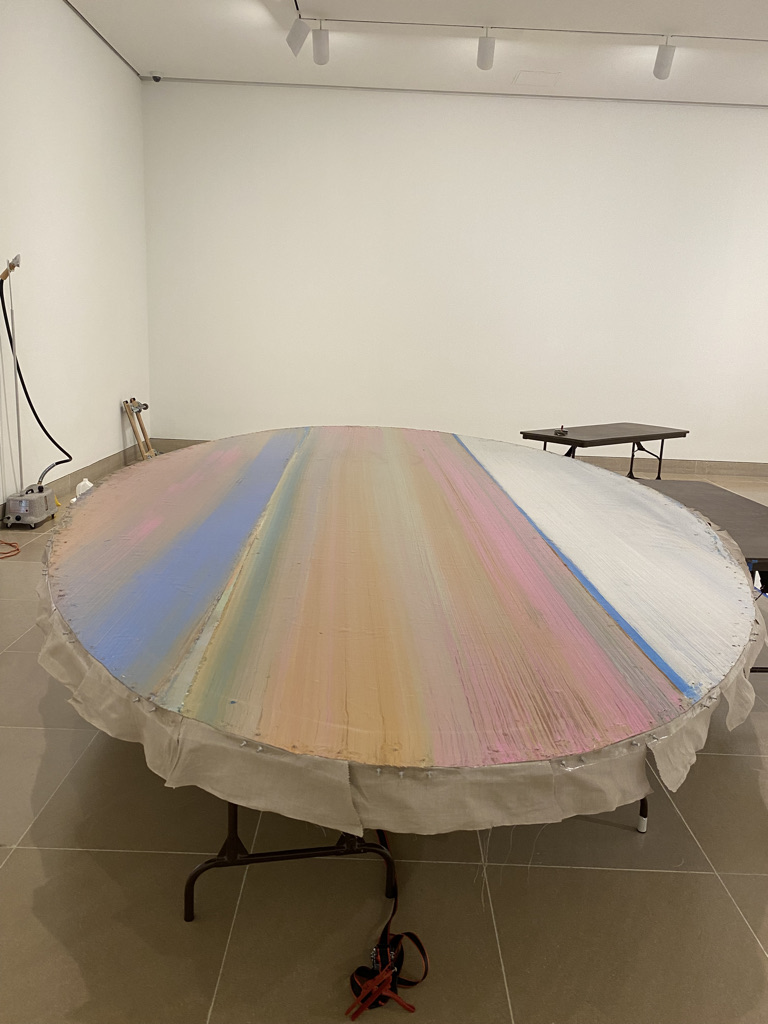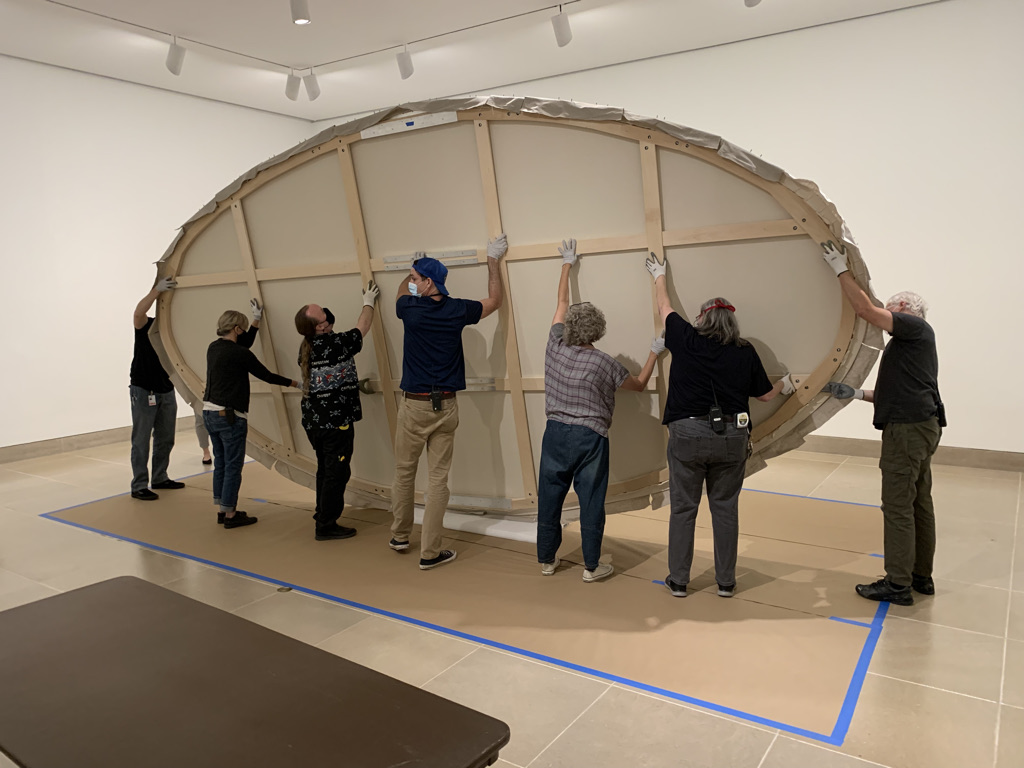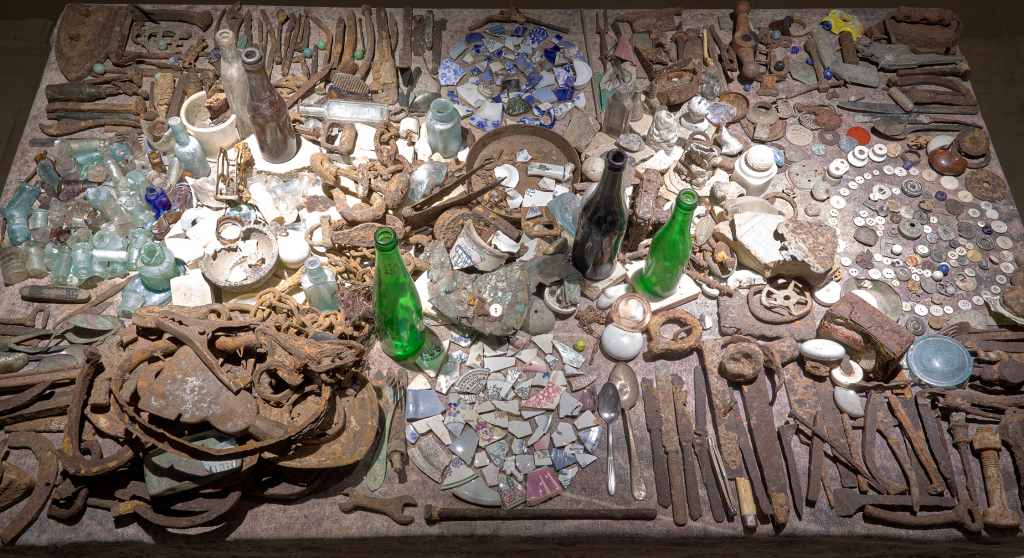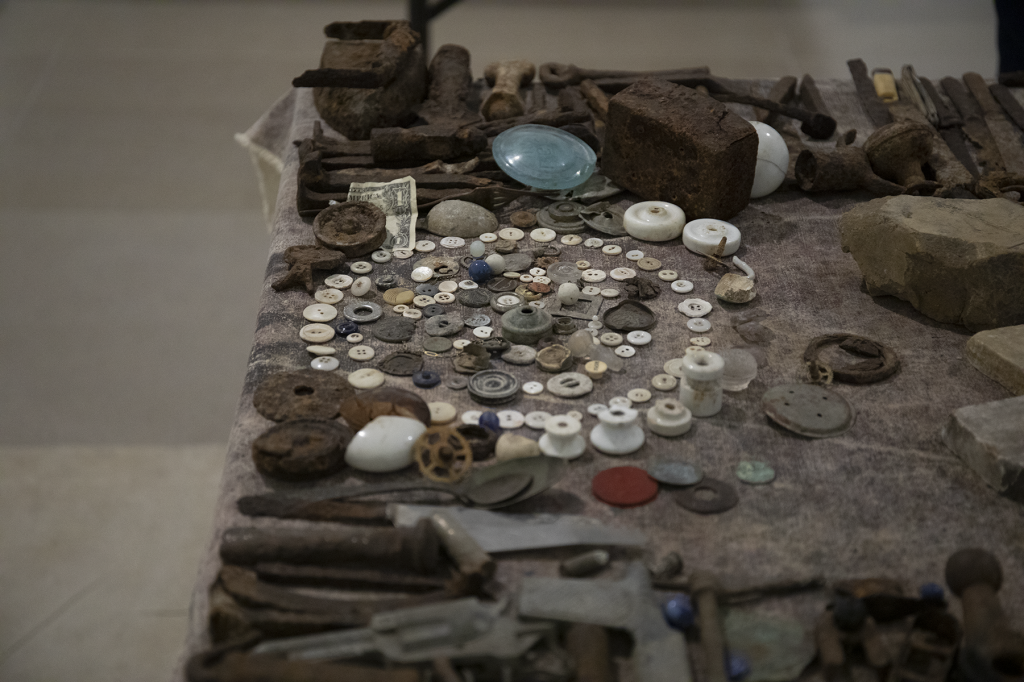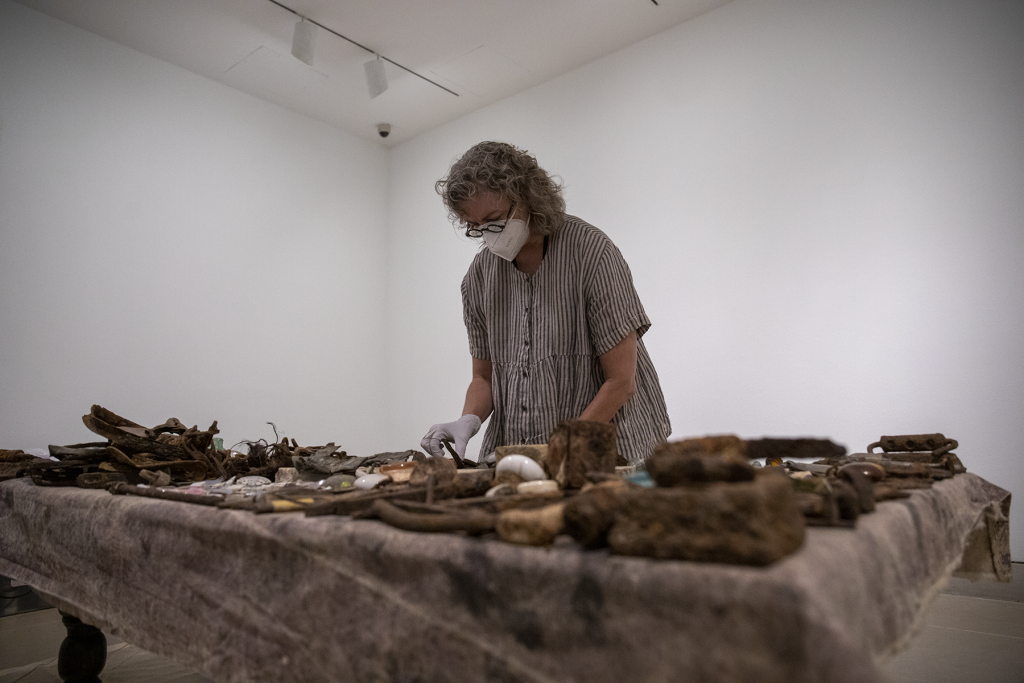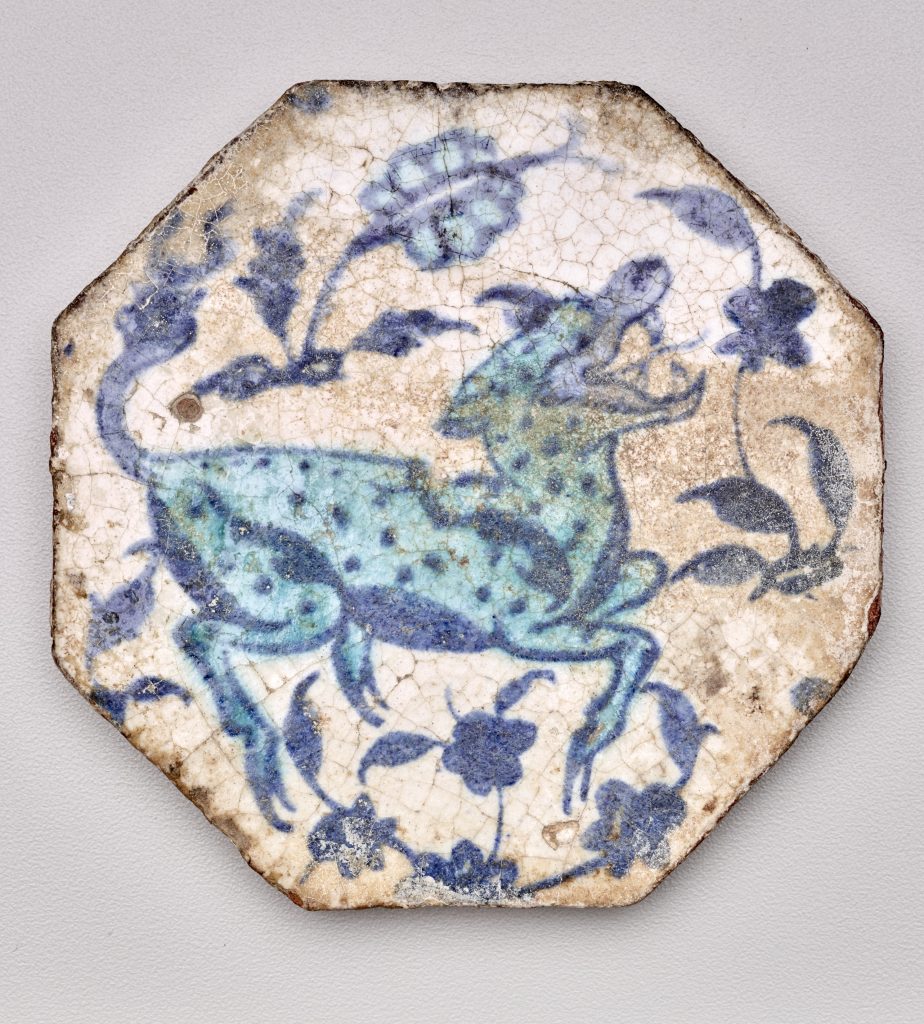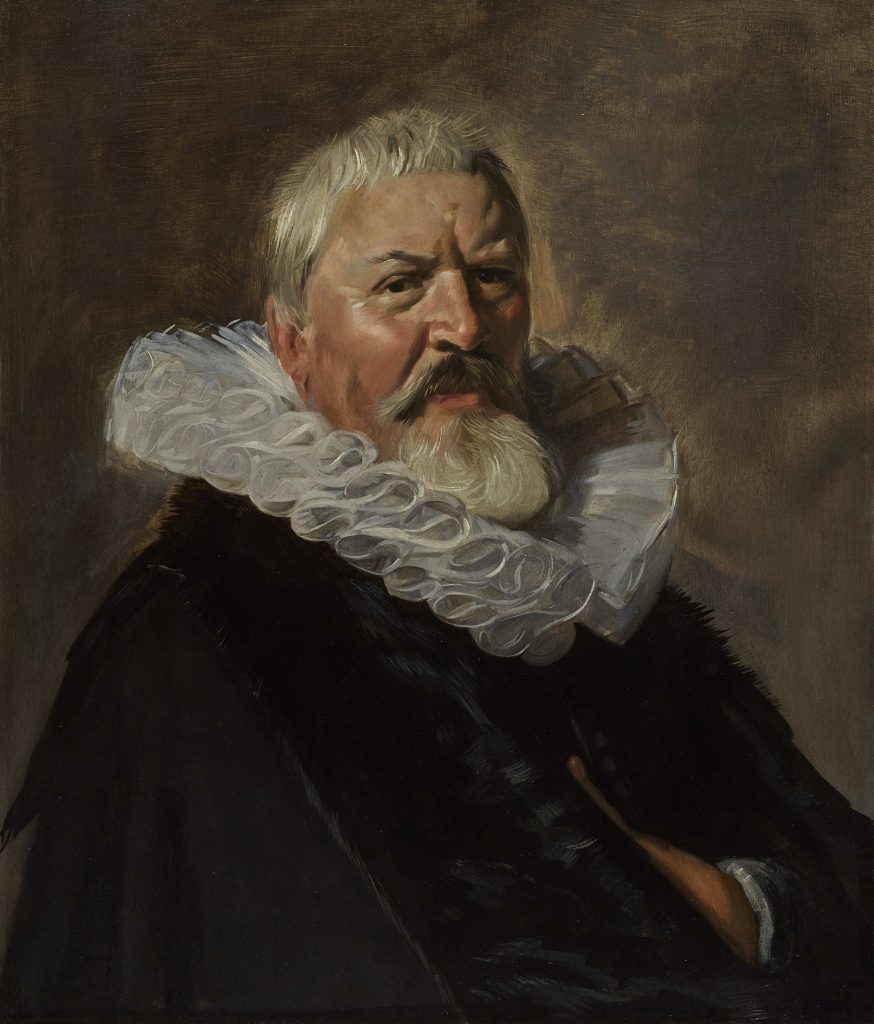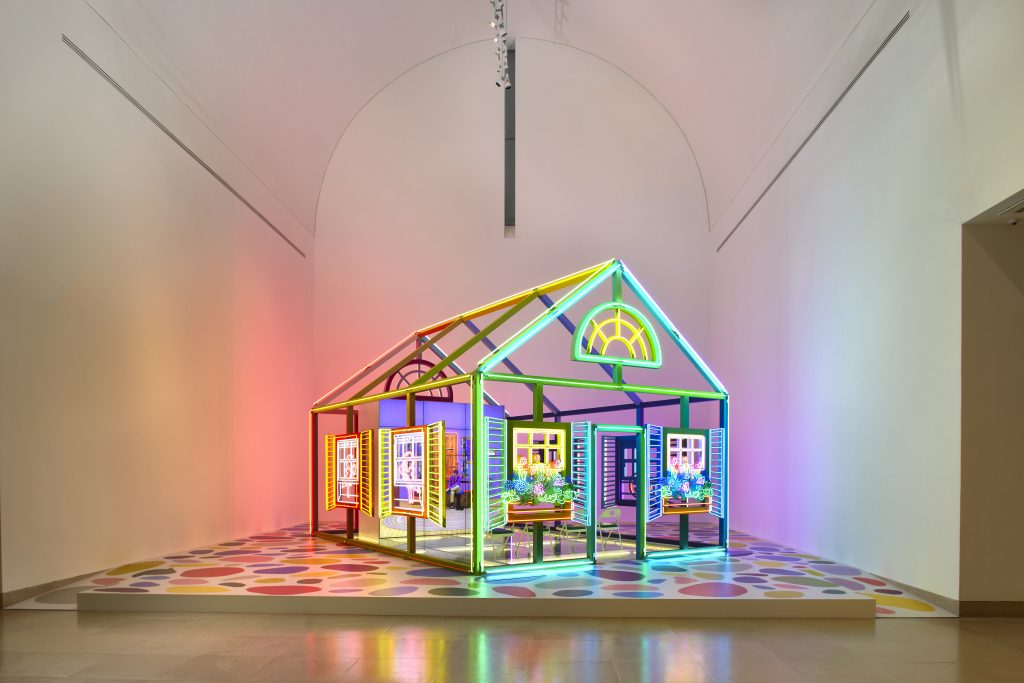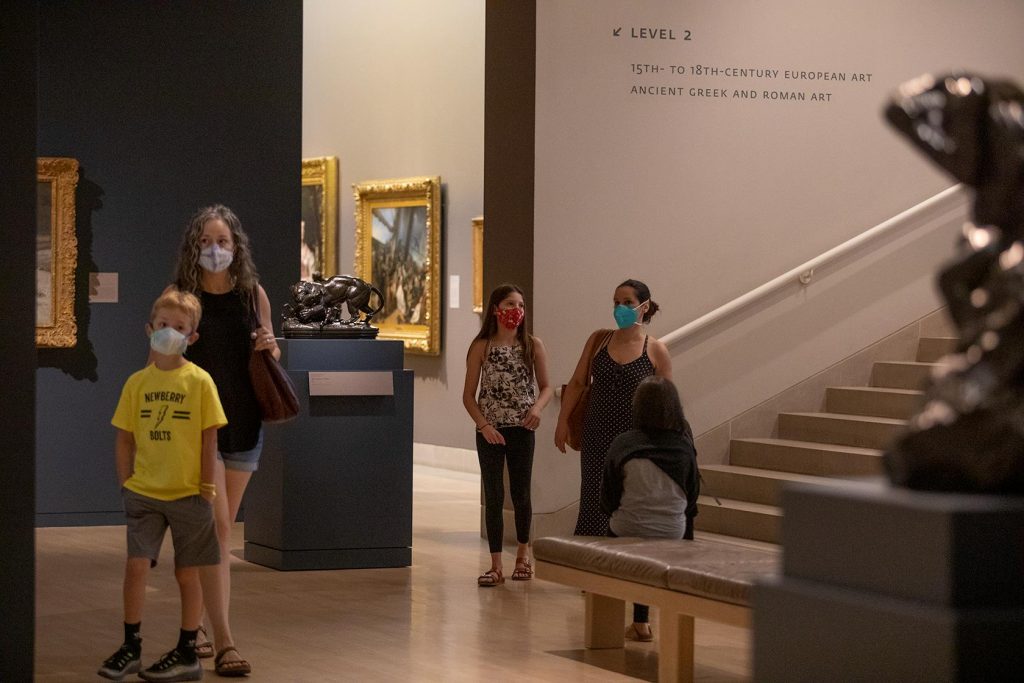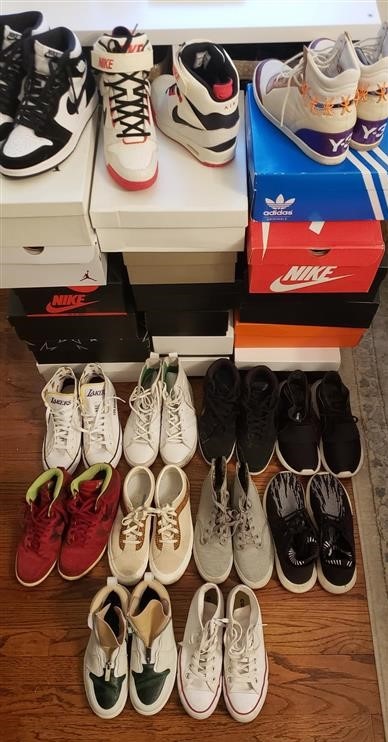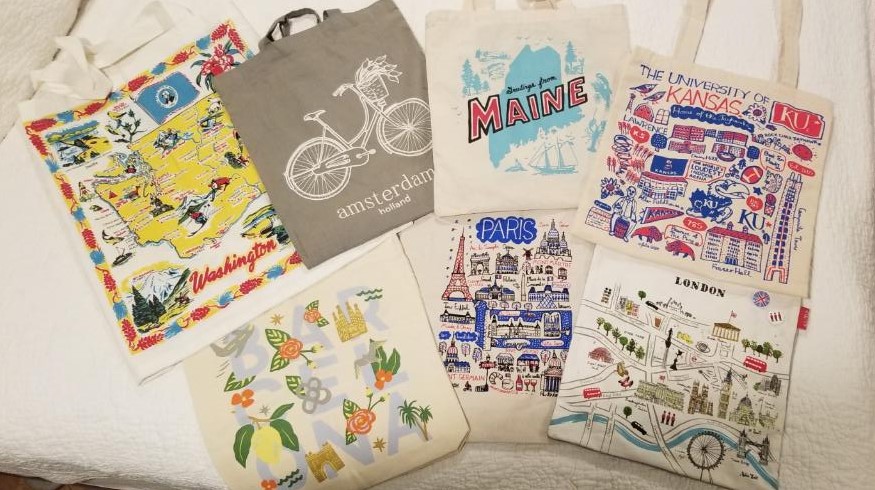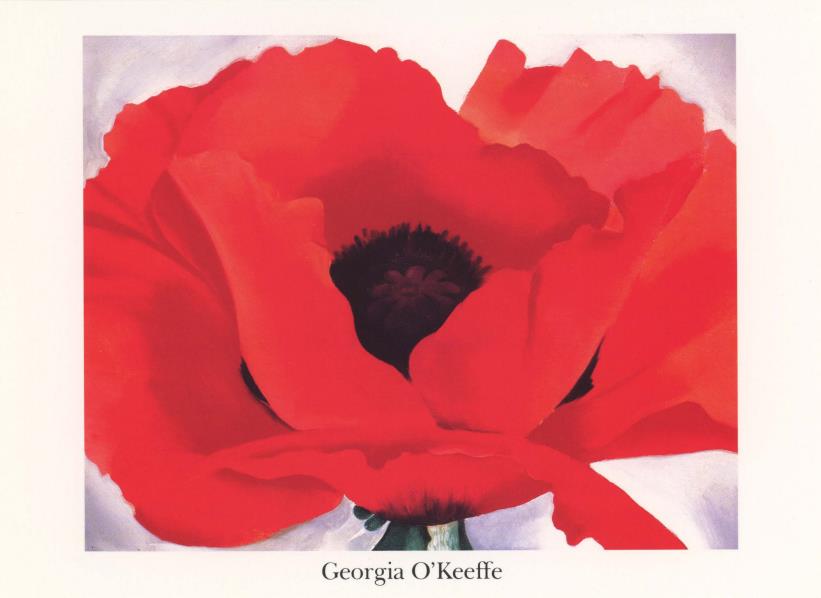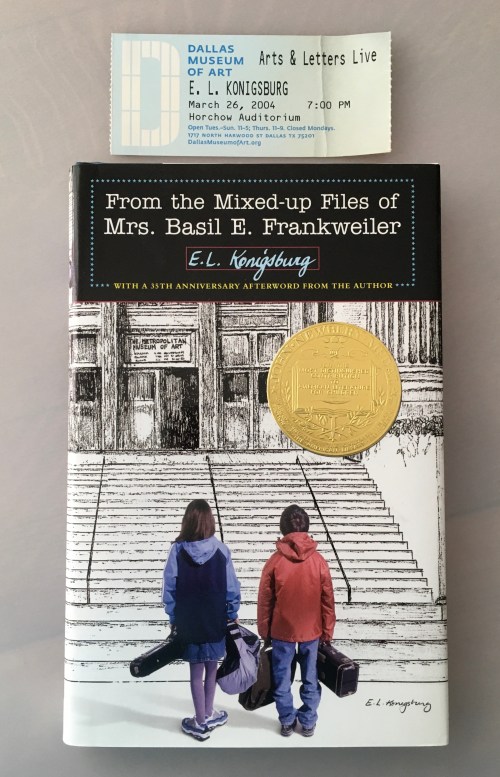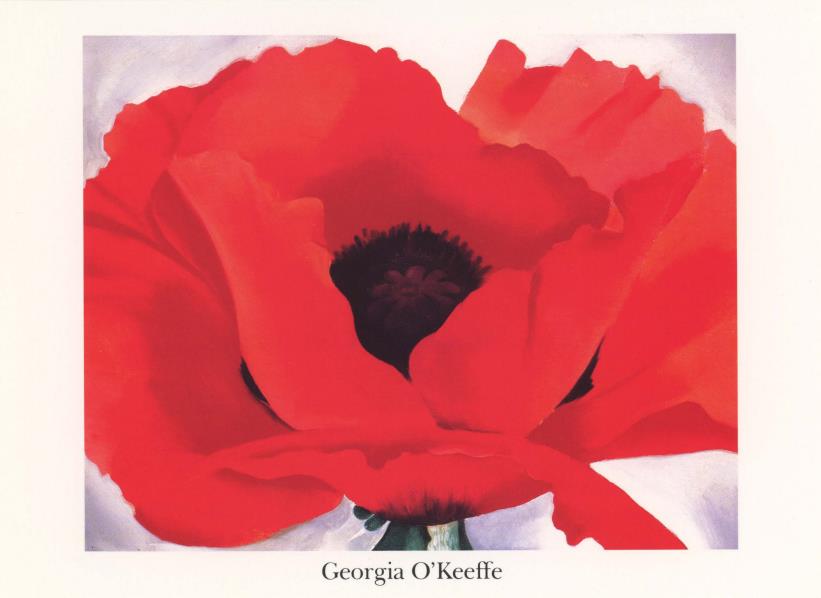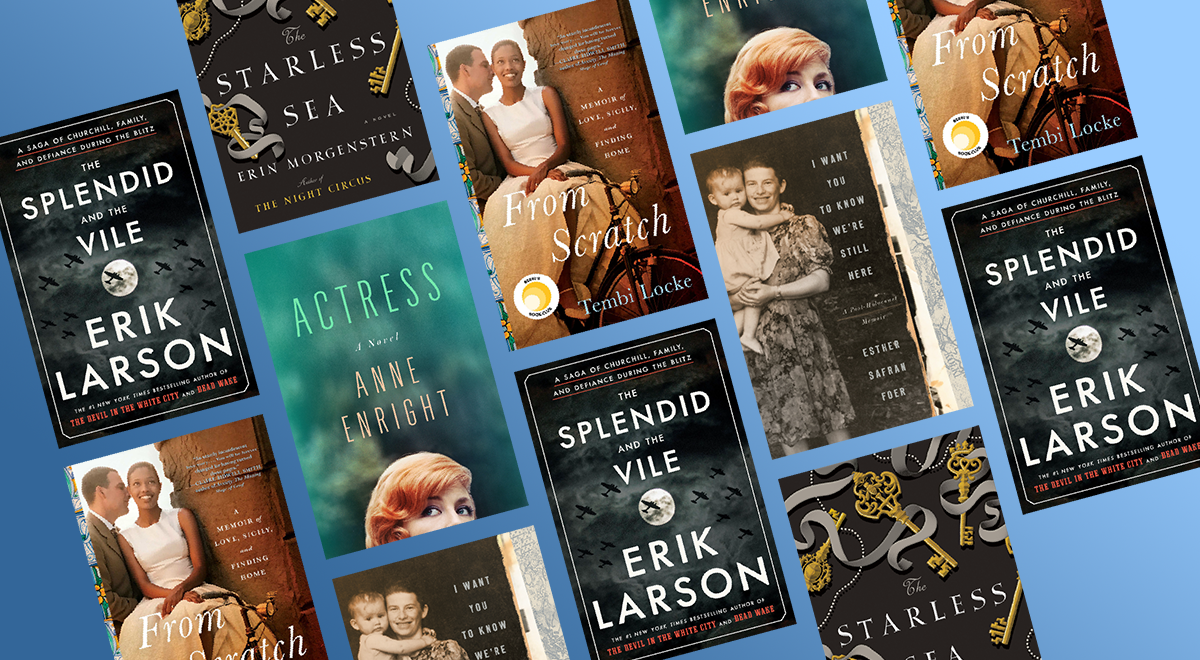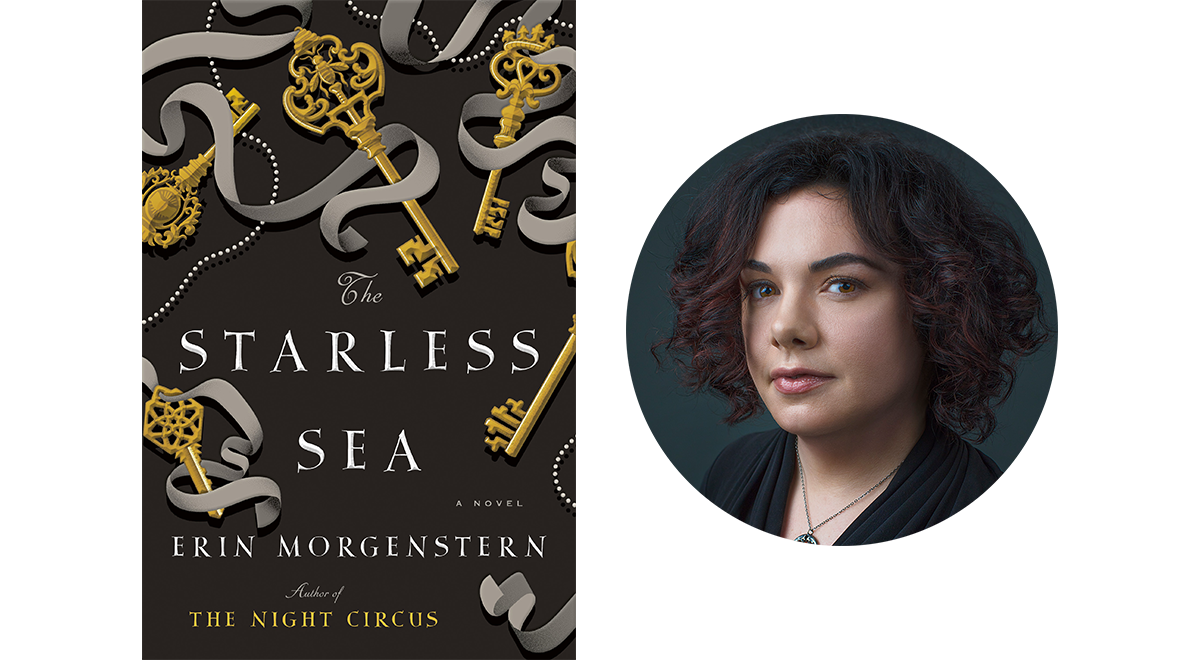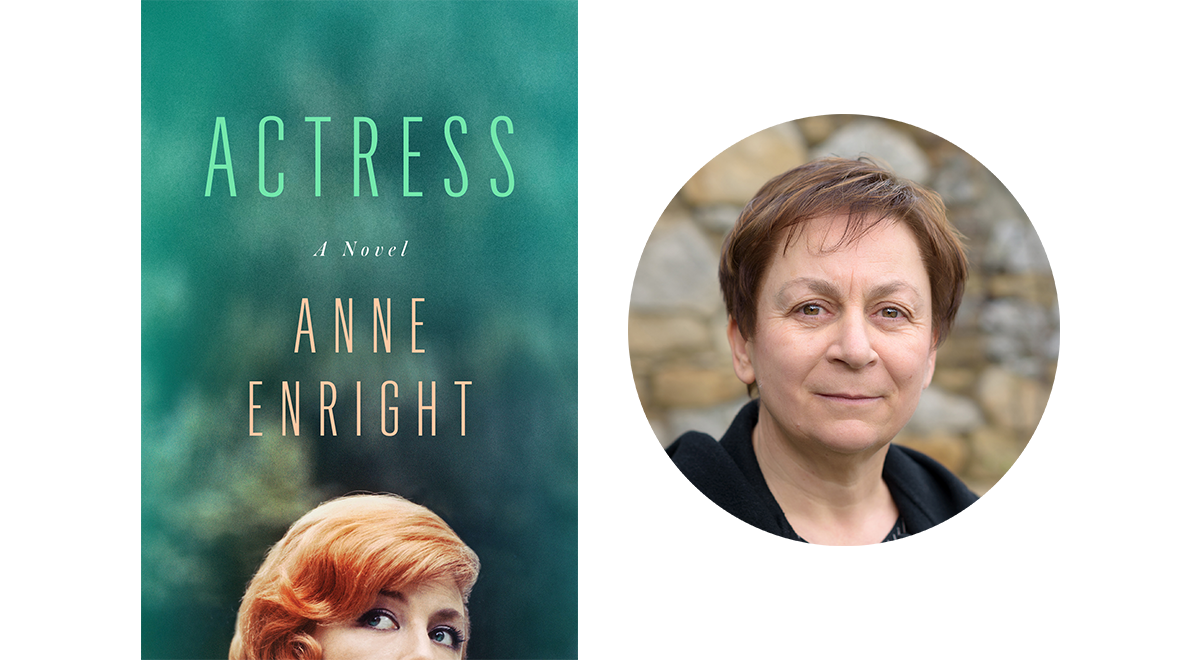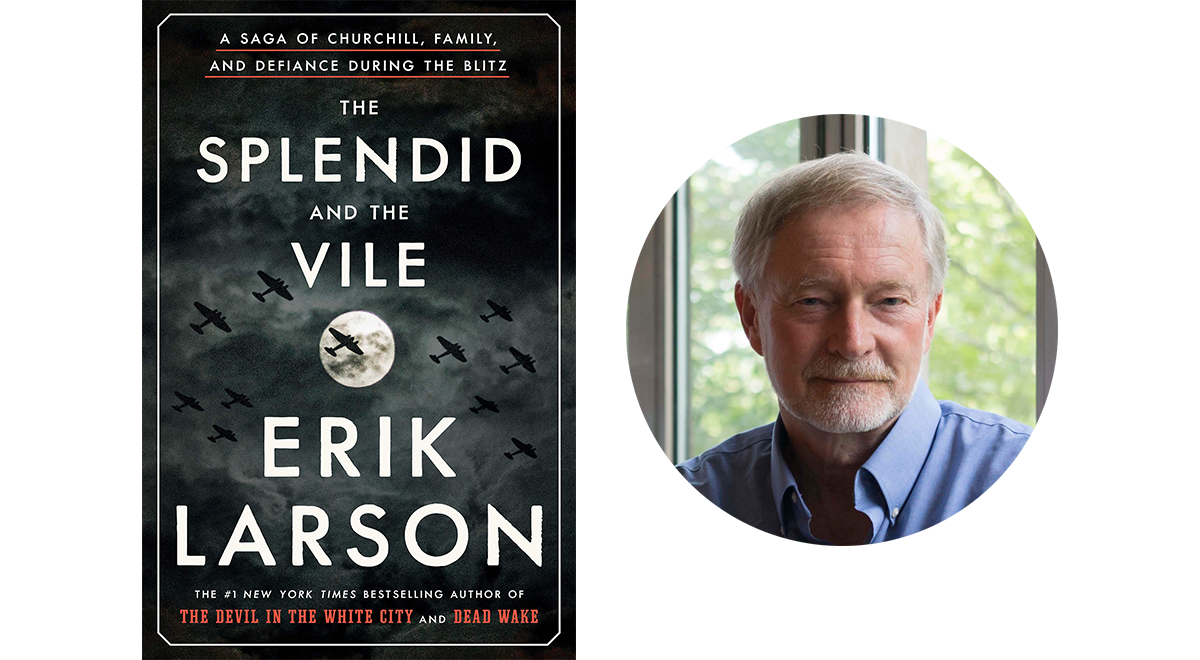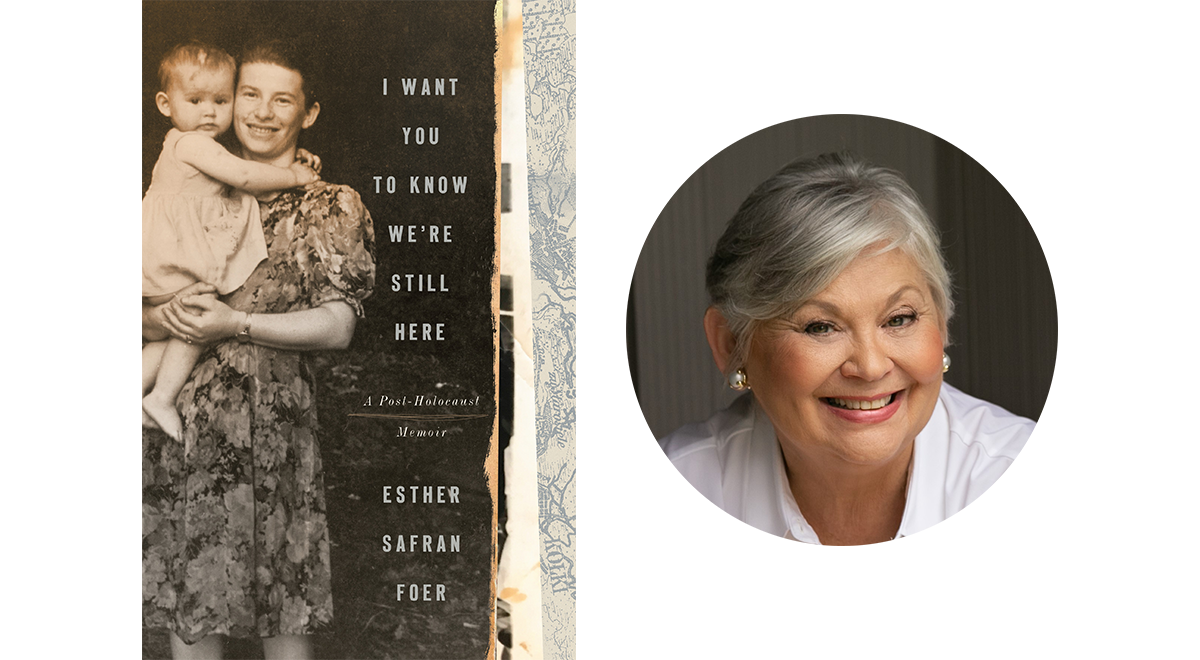Influenced by Black cultural traditions and Japanese Gutai, artist Senga Nengudi’s work synthesizes multiple ideas circulating in the 1960s and 1970s: feminist practice, the role of materiality, and the relationship between activation, viewership, and performance. In her sculpture Water Composition I, currently on view in Slip Zone, Nengudi encloses colored water in plastic, creating a body-like form.
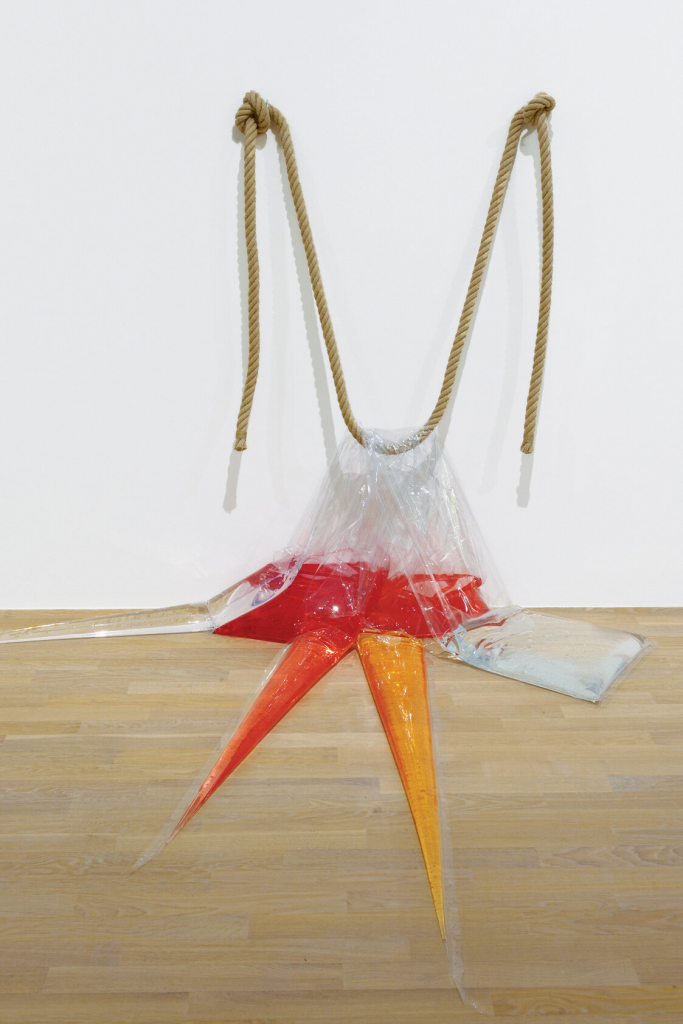
We asked Senior Preparator and IPM Coordinator Mary Nicolett what stood out to her about her experience installing this abstract work. Here’s what she had to say:
First priority upon being approached to work with Fran Baas, Interim Chief Conservator, on the Nengudi was sourcing two 2-gallon jugs for filling the piece.
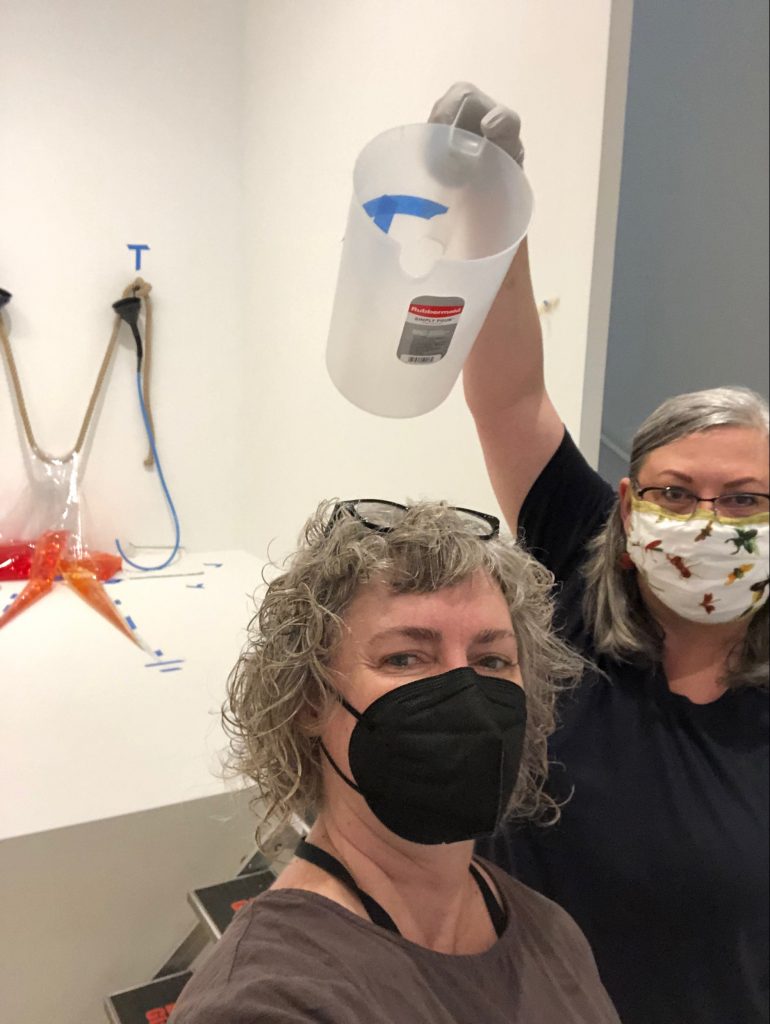
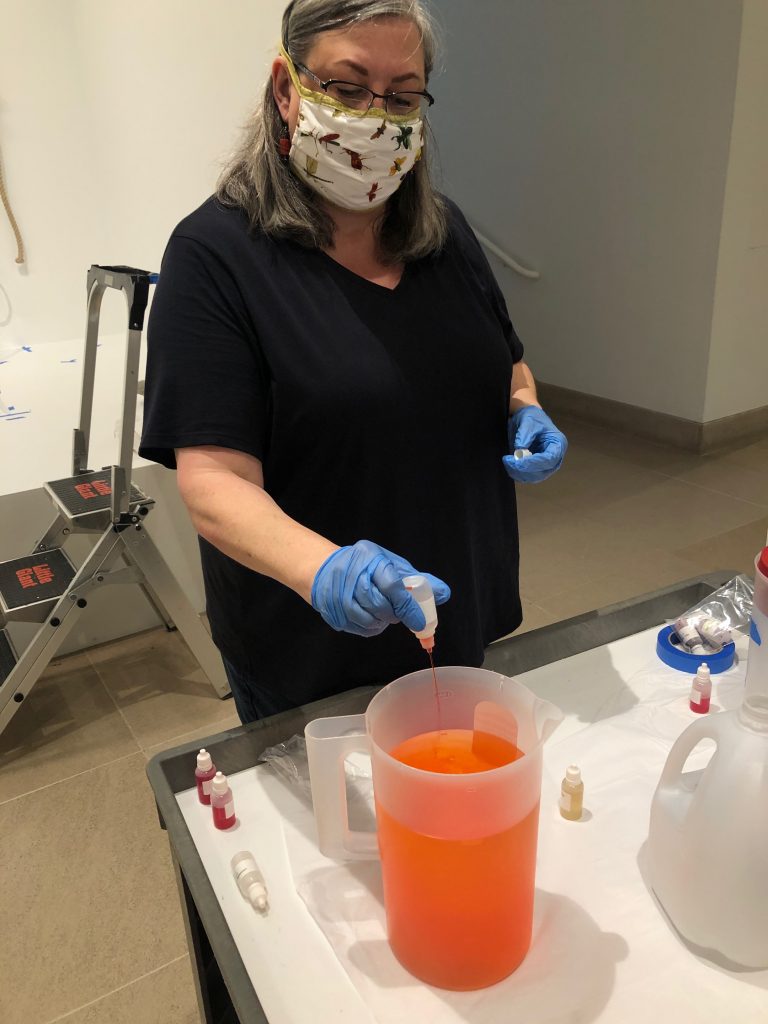
Once that had been done, we set about opening the contents of the packing tube. There I found a beautiful rope, tubing and funnels, pre-filled dye containers with pre-measured amounts, and of course the plastic “bags.” Also included, and very important, was the template for placement! We were able to figure out exactly where on the platform the piece would go, and it detailed the exact pinpointed location of each PVC bag including position of the heat-sealed-seam.
It took a while to truly understand the tubing and funnel system. What I wasn’t prepared for was how exquisitely this PVC bags where packed, in order of installation, one by one. Preparators often wish for things to be packed better, but this was a thing of beauty!
Fran and I set about the morning hooking the tubes into each bag and filling with the prescribed amount of dye mixed with the prescribed ionized distilled water. It was “slow and steady wins the race” and we did not spill a drop! Each funnel was marked with tape on the wall, as to which bag the tube went to, just to avoid any possible confusion.
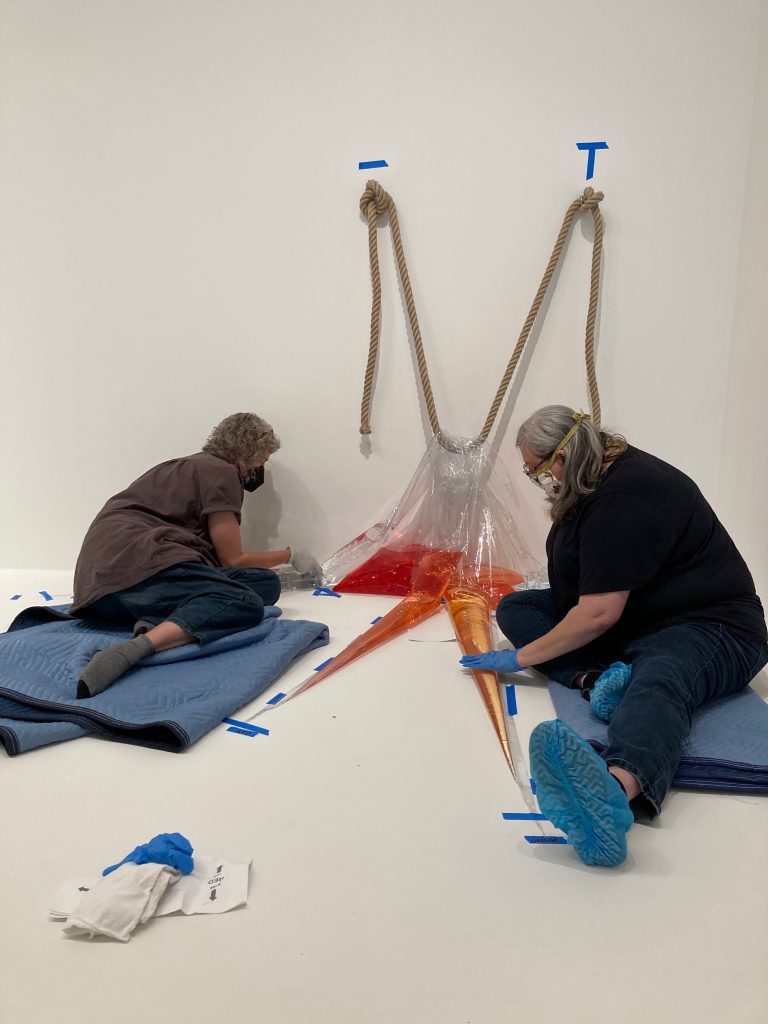
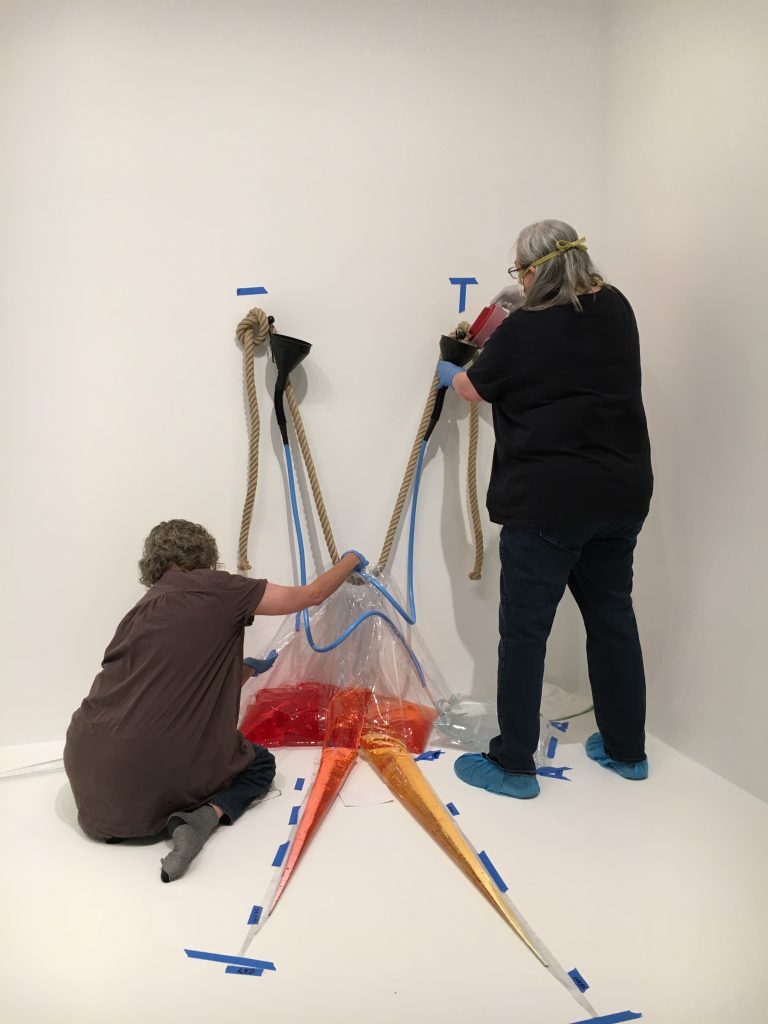
After all the bags were filled, Fran and I began removing bubbles in the bags by gently thumping each bag until the bubbles moved to the top.
A bit of tape removal, sweeping, touch-up paint, and we were done! And it looks marvelous!
Come see this work for yourself in the free exhibition Slip Zone: A New Look at Postwar Abstraction in the Americas and East Asia, on view now through July 10, 2022.
Mary Nicolett is the Senior Preparator and IPM Coordinator at the DMA.
